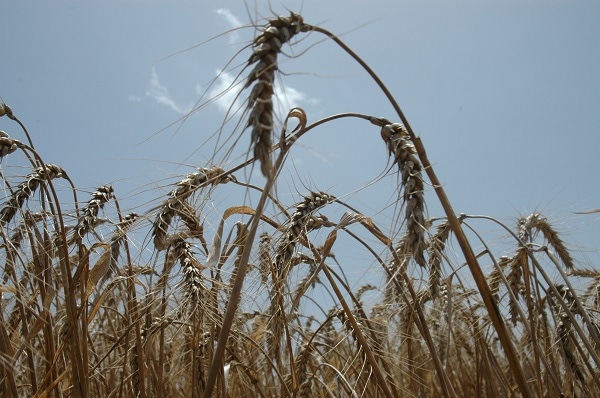January 9, 2015

Going back 25 years, the monthly average high price of wheat in Oklahoma and the Texas Panhandle was about $10.60 (March 2008). The single daily highest price was March 12, 2008 ($12.62). The monthly average lowest price of wheat was $2.07 (December 1999).
Most analysts will agree that an upward shift of wheat prices occurred during the 2006/07 wheat marketing year (Figure 1). Between 1990 and June 2006, KC wheat contract prices tended to trade between $2.50 and $5. KC wheat contract prices were above $5 between October 1995 and July 1996, which was a period of extremely tight stocks.
Since June 2006, KC wheat contract prices have mostly traded between $4.50 and $10. The contracts did trade above $10 between December 2007 and March 2008. Because there was little wheat for sale during this time, most analysts tend to discount any odds of wheat contract prices going above $10.
The above discussion implies that future KC wheat contract prices are expected to trade between a low of $4.50 and a high of $10.
During the period June 2008 through July 2010, KC wheat contract prices traded in a price range between $4.50 and $7. During August 2010 through October 2014, KC wheat contract prices were between $6 and $10.
For the latest on southwest agriculture, please check out Southwest Farm Press Daily and receive the latest news right to your inbox.
KC wheat contract prices may be divided into three major price ranges – $4.50 to $6, $6 to $7, and $7 to $10. The lows and highs of these ranges are not price points but areas.
During the 2014/15 wheat marketing-year and with projected relatively tight U.S. wheat ending stocks (644 million bushels) and average world wheat ending stocks (7.1 billion bushels), KC wheat contract prices challenged the $6 price support. In November and December, KC wheat contract prices traded as low as $5.50 for short periods of time. But, the price always returned back to the $6 area.
For future KC wheat contract prices to establish a trading range between $4.50 and $6, U.S. wheat ending stocks need to be above 775 million bushels and world wheat ending stocks above 7 billion bushels.
Look at corn
CBT corn futures contract prices may be used to support this conclusion (Figure 2). Between January 1990 and October 2006, CBT corn contract prices mostly traded in a range between $1.80 and $3. In November 2006, CBT corn contract prices shifted to a new trading range between $3 and $8.
When U.S. corn ending stocks were less than about 1 billion bushels, CBT corn contract prices tended to trade in the $5.50 to $8 range. When ending stocks were near the 1.2 billion bushel level, CBT corn prices traded between $4.25 and $5.50. Corn ending stocks above 1.6 billion bushels resulted in CBT corn prices in the $3 to $4.50 range.
Relatively high (above average) corn stocks were necessary for prices to trade in the lower range. U.S. wheat ending stocks are below average, and world ending stocks are average. For wheat prices to trade in the bottom range ($4.50 to $6), both U.S. and world stocks (especially world ending stocks) need to be above average.
This analysis implies that if 2015 U.S. and world wheat production results in higher wheat stocks, the odds are relatively high that wheat prices will decline into the $4.50 to $6 range. If 2015 world wheat production results in lower stocks, wheat prices should remain in the $6 to 10 range. Realistically, the range could be narrowed to $6 to $8.
You May Also Like




